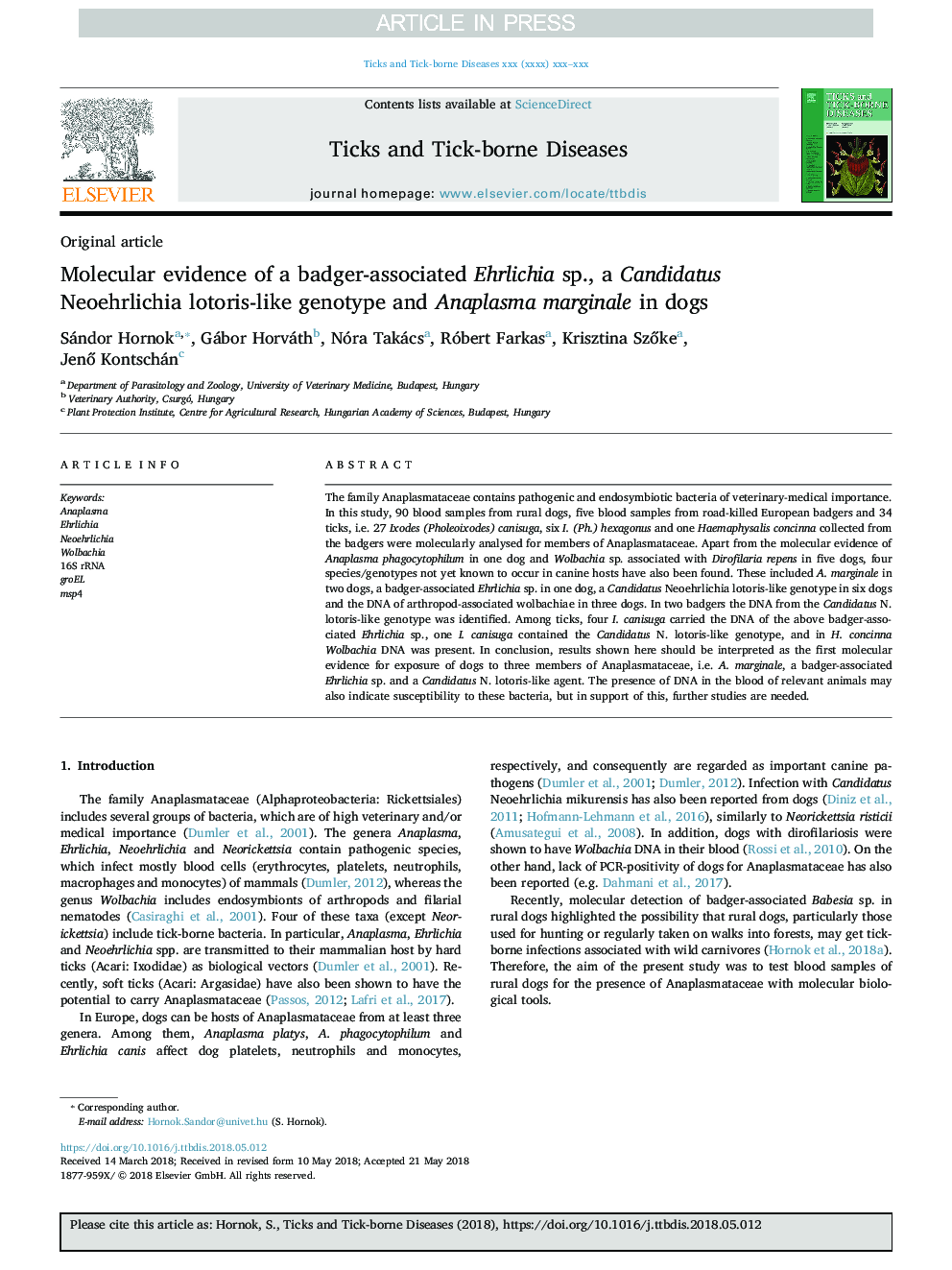| Article ID | Journal | Published Year | Pages | File Type |
|---|---|---|---|---|
| 8507093 | Ticks and Tick-borne Diseases | 2018 | 8 Pages |
Abstract
The family Anaplasmataceae contains pathogenic and endosymbiotic bacteria of veterinary-medical importance. In this study, 90 blood samples from rural dogs, five blood samples from road-killed European badgers and 34 ticks, i.e. 27 Ixodes (Pholeoixodes) canisuga, six I. (Ph.) hexagonus and one Haemaphysalis concinna collected from the badgers were molecularly analysed for members of Anaplasmataceae. Apart from the molecular evidence of Anaplasma phagocytophilum in one dog and Wolbachia sp. associated with Dirofilaria repens in five dogs, four species/genotypes not yet known to occur in canine hosts have also been found. These included A. marginale in two dogs, a badger-associated Ehrlichia sp. in one dog, a Candidatus Neoehrlichia lotoris-like genotype in six dogs and the DNA of arthropod-associated wolbachiae in three dogs. In two badgers the DNA from the Candidatus N. lotoris-like genotype was identified. Among ticks, four I. canisuga carried the DNA of the above badger-associated Ehrlichia sp., one I. canisuga contained the Candidatus N. lotoris-like genotype, and in H. concinna Wolbachia DNA was present. In conclusion, results shown here should be interpreted as the first molecular evidence for exposure of dogs to three members of Anaplasmataceae, i.e. A. marginale, a badger-associated Ehrlichia sp. and a Candidatus N. lotoris-like agent. The presence of DNA in the blood of relevant animals may also indicate susceptibility to these bacteria, but in support of this, further studies are needed.
Related Topics
Life Sciences
Agricultural and Biological Sciences
Animal Science and Zoology
Authors
Sándor Hornok, Gábor Horváth, Nóra Takács, Róbert Farkas, Krisztina SzÅke, JenÅ Kontschán,
